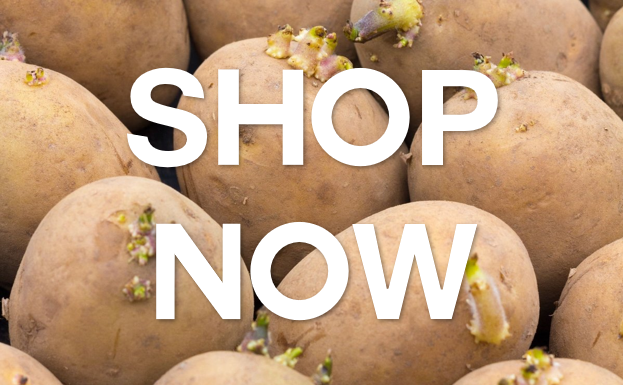Potatoes
Tolerant of cool soil and frost, potatoes can be planted in late spring. Remove tubers from storage and warm to a temperature of 50-60?F, to enhance sprout formation. Small tubers (golf ball size) may be planted whole. Larger Tubers can be cut into pieces weighing about 2 ounces each, having at least 1-3 eyes. Seed pieces can be planted immediately after cutting, but will generally sprout and show better resistance to decay if, after cutting, are left in a cool, moist room with good ventilation for 3 days. Sow seed pieces 3-4 inches deep. Leave 10-12? between plants in rows 2-3 feet apart. Closer plantings can result in better yields, but with smaller potatoes. Do not plant directly from cold storage.
GROWING
Grow in full sun with a soil pH of 5.5-6.5. Potatoes are heavy feeders which require deep fertile soil with good drainage. Mineral soils are best. Apply plentiful amounts of compost and well-rotted manure. Fresh manure will promote development of scab organism. Lime should also be avoided at planting time. Maintain even moisture as interruptions in moisture will cause irregular growth spurts resulting in rough, knobby, malformed or cracked tubers.
HARVEST
Early Potatoes can be dug when tubers reach a useable size. This is often 2-5 weeks after flowering. Storage crops should be left in the ground until light frosts or natural decline cause the tops to wither.
PESTS & DISEASES
Blight is a fungal disease which can cause potatoes to rot in storage. The disease appears as dark brown lesions with fluffy white mould on the undersides of the leaves. Use a sulphur or copper fungicide to help prevent the onset of the disease. Control potato beetles with Diatomaceous Earth or pick off beetles and drown in soapy water.
COMPANIONS
Bush beans, cabbage family, corn, parsnip, and peas.

